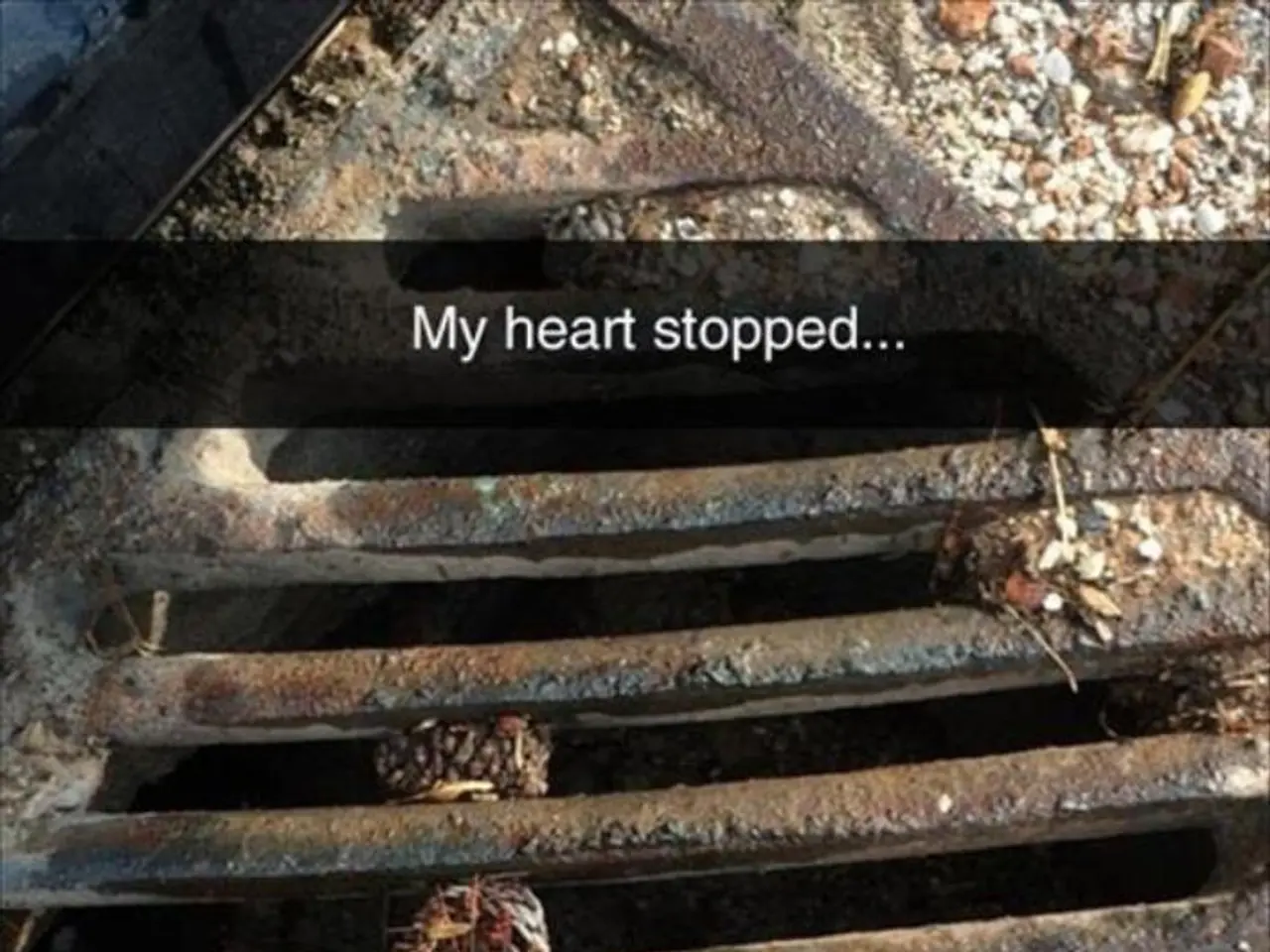Post-Heart Attack: Consequences
A heart attack, also known as a myocardial infarction, can be a life-changing event. However, with the right care and lifestyle changes, many people can recover and return to their normal lives. This article provides an overview of the management and prevention strategies for heart attacks, the common aftereffects, and the role of cardiac rehabilitation in recovery.
Understanding Heart Attacks
A heart attack occurs when a blockage restricts or stops the flow of blood that carries oxygen in a heart artery. This blockage is usually due to the accumulation of fatty deposits called plaque. Symptoms can vary, but chest pain is a common complaint, although EKG changes may be nonspecific [1].
Managing Heart Attacks
Managing a heart attack involves a combination of medical treatments and lifestyle modifications.
Medical Management
Doctors may prescribe medications such as beta-blockers, ACE inhibitors, antiplatelets, statins, and sometimes device therapy to support heart function and prevent further cardiac events [2].
Lifestyle Changes
Adopting a heart-healthy diet, regular physical activity (as recommended by a healthcare provider), quitting smoking, managing stress, and controlling underlying risk factors like hypertension, diabetes, and high cholesterol are crucial for recovery and preventing another heart attack [2].
Rehabilitation
Cardiac rehabilitation programs that include monitored exercise, education, and counseling improve recovery and reduce the risk of recurrence [3]. These programs are designed to maximize recovery and help individuals return to their normal activities.
Monitoring and Follow-up
Regular medical checkups to monitor heart function, blood pressure, and medication adherence are critical [2].
Common Aftereffects
Common aftereffects of a heart attack include physical and psychological complications such as heart failure, arrhythmias (irregular heartbeats), chest pain, fatigue, depression, anxiety, and reduced exercise tolerance. These arise due to damage to the heart muscle and related cardiovascular changes [4].
Psychological Effects
Psychological effects such as anxiety and depression following a heart attack can resemble or overlap with symptoms from other conditions like panic or Long COVID but require targeted assessment and treatment by specialists [1][4].
Prevention
Preventing another heart attack involves maintaining a heart-healthy lifestyle, managing risk factors, and attending follow-up medical appointments. This includes following healthcare professionals' directions for taking medications, seeking support from family members or others who have had a heart attack, and managing any necessary risk factors [5].
Recovery and Return to Work
Most people survive a first heart attack and can eventually return to work [6]. However, the recovery process can vary greatly depending on the severity of the heart attack, the individual's overall health, and their commitment to making lifestyle changes.
Emergency Treatment
Emergency treatment for a heart attack includes aspirin, nitroglycerin, thrombolytic drugs, oxygen therapy, Percutaneous coronary intervention (PCI), and Coronary artery bypass grafting [7].
Complications
Heart failure, arrhythmias, chest pain, cardiogenic shock, and heart rupture are common complications of a heart attack [8]. Heart failure is the inability of the heart to pump enough blood to the body, usually occurring on the left side of the heart [9]. Arrhythmias are irregular heart rhythms that can be life-threatening, with ventricular tachyarrhythmia being a common cause of sudden death after a heart attack [10].
Statistics
More than one million people in the United States experience a heart attack each year [11]. A heart rupture, which is the breaking open of heart tissue, can occur in the wall of the heart, in the wall that separates the two ventricles, or in the muscles inside the ventricles [12]. The 6- to 12-month death rate for cardiogenic shock is approximately 50% [13].
In PCI, a minimally invasive procedure, a small mesh tube called a stent is inserted to open heart blood vessels with a partial or complete blockage [14].
References:
- American Heart Association. (2021). Heart Attack Symptoms. Retrieved from https://www.heart.org/en/health-topics/heart-attack/understand-your-risk-of-heart-attack/heart-attack-symptoms
- American Heart Association. (2021). Heart Attack Treatment. Retrieved from https://www.heart.org/en/health-topics/heart-attack/understand-your-risk-of-heart-attack/heart-attack-treatment
- American Heart Association. (2021). Cardiac Rehabilitation. Retrieved from https://www.heart.org/en/health-topics/cardiac-rehabilitation
- American Heart Association. (2021). Emotional Recovery After a Heart Attack. Retrieved from https://www.heart.org/en/health-topics/heart-attack/understand-your-risk-of-heart-attack/emotional-recovery-after-a-heart-attack
- American Heart Association. (2021). Heart Attack Prevention. Retrieved from https://www.heart.org/en/health-topics/heart-attack/understand-your-risk-of-heart-attack/heart-attack-prevention
- American Heart Association. (2021). Returning to Work After a Heart Attack. Retrieved from https://www.heart.org/en/health-topics/heart-attack/understand-your-risk-of-heart-attack/returning-to-work-after-a-heart-attack
- American Heart Association. (2021). Heart Attack Emergency Care. Retrieved from https://www.heart.org/en/health-topics/heart-attack/understand-your-risk-of-heart-attack/heart-attack-emergency-care
- American Heart Association. (2021). Heart Attack Complications. Retrieved from https://www.heart.org/en/health-topics/heart-attack/understand-your-risk-of-heart-attack/heart-attack-complications
- American Heart Association. (2021). Heart Failure. Retrieved from https://www.heart.org/en/health-topics/heart-failure
- American Heart Association. (2021). Arrhythmia. Retrieved from https://www.heart.org/en/health-topics/arrhythmia
- Centers for Disease Control and Prevention. (2021). Heart Disease Facts. Retrieved from https://www.cdc.gov/heartdisease/facts.htm
- Khandheria, B. (2002). Ventricular Rupture After Myocardial Infarction. New England Journal of Medicine, 346(24), 1927-1934. doi:10.1056/nejmcp013106
- Tang, W., et al. (2015). Cardiogenic Shock: Epidemiology, Pathophysiology, and Current Treatment Approaches. Circulation, 131(18), 1721-1731. doi:10.1161/CIRCULATIONAHA.114.010427
- American Heart Association. (2021). Percutaneous Coronary Intervention (PCI). Retrieved from https://www.heart.org/en/health-topics/heart-attack/understand-your-risk-of-heart-attack/percutaneous-coronary-intervention-pci
Read also:
- Heart Disease and COVID-19: Damage, Risks, and Prospects
- Stocks of L&T, Pfizer, Indian Hotels, Rainbow Children's, Seamec, Onward Tech, JSW Steel, Nelco, and Onward Tech (once again) are expected to generate activity on Tuesday
- Conflict between Israel and Palestine prompts UN concern over vanished generations in Gaza
- indulging in spa relaxation and immersing in historical charm: experiencing spas and the history of Karlovy Vary








